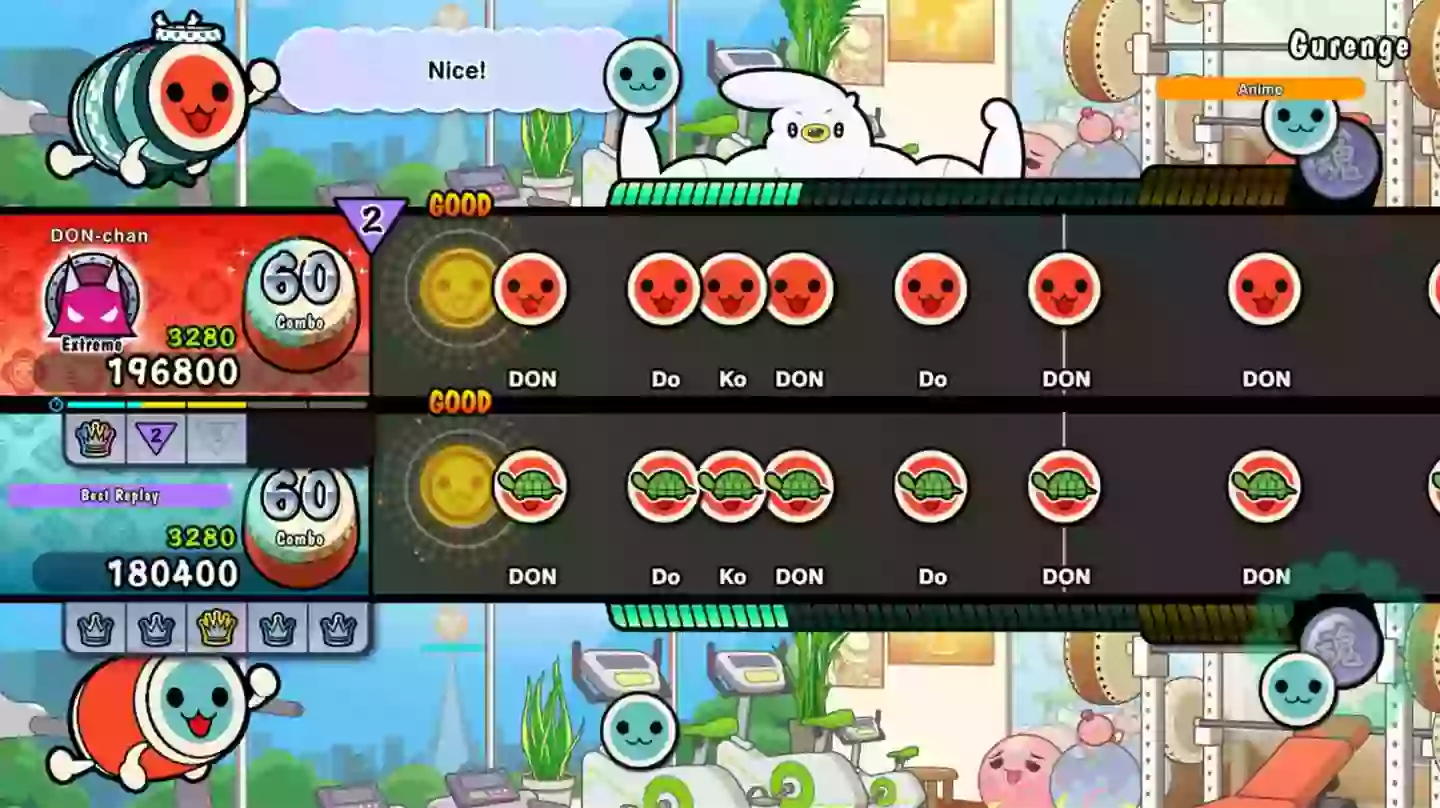
Taiko no Tatsujin is a funny little franchise. I can’t think of any other series which has a soundtrack consisting of hits from both Hatsune Miku and Mozart, and I’m so glad it does. The drumming game’s roots go back to Japanese arcades in the early 2000s, where players could thwack a physical (fake) taiko drum to a variety of songs. While these arcade machines still exist today (and playing on one of them someday is genuinely on my bucket list), there’s also been a number of home console releases over the years - perfect for refining those drumming and rhythm skills from the comfort of your sofa.
Taiko no Tatsujin: Rhythm Festival is the latest of these games to release for the Nintendo Switch, and I’ve come to the conclusion that this is the Taiko title for the most hardcore players out there. Which I realise sounds hilarious when you look at the cute and colourful aesthetic with its smiley sentient drums, but hear me out.
Take a look at the trailer for Taiko no Tatsujin: Rhythm Festival below.
If you’ve played a Taiko game before, the concept is, as you’d imagine, much the same - hit your drum controller, tap your buttons, or swing your Joy-Con (if you’re feeling wild) to the beat of the songs, aiming to set the best score you can. Without counting the DLC, there’s over 70 songs to drum along to right out of the box (there’s a few more to unlock, too), including returning favourites like the Attack on Titan opening theme, ‘Guren no Yumiya’, and Undertale’s ‘Megalovania’, as well as some new ones like ‘The Legend of Zelda Main Theme’ and Persona 5’s ‘Life Will Change’.
The key phrase in that paragraph is “without counting the DLC”, because good lord does this game go above and beyond. Extra paid content is nothing new for the series, but what Rhythm Festival does is throw hundreds of additional songs into a subscription service model called the Taiko Music Pass. We’re talking almost 600 extra songs here - it’s absolutely huge, and like the base game, includes a mix of tracks that fans will know well, along with some fresh new additions.
Advert
The addition of the Music Pass is one of the main things that I’d say cements Rhythm Festival as a game for the serious players. It’s a colossal amount of extra content for a start, but the fact that it’s paid for on a month-by-month basis (you can also pay for three months in a row, but you get the gist) is going to be a lot more appealing to those who play the game very regularly than those who might just fancy a short drumming session every now and then. Whether or not you consider the (approximately) £10/$10 for three months to be worth it is entirely up to you - although I can’t help but feel slightly miffed that so much content is locked out of a full-price Switch game right from launch.
Moving on though, and where Rhythm Festival really sets itself apart is its addition of the Improvement Support mode. This new feature allows players to boot up any song, play through it once, and then take a look at a breakdown of how they did over the course of it. Each track is divided into five equal sections, and you’re then able to see how many Good, OK and Bad notes you’re hitting in each one, to get a picture of where exactly you’re struggling. You can also play against your ghost, which will highlight to you which notes you were hitting a bit slow or too fast - it’s surprisingly in depth.

Each of the track’s sections can be practised individually, or you can select multiple to play through all at once. A number of additional options are here to make practising even more efficient - for example, if you’re finding one part of a song really difficult, you can slow down the notes to get your head round the rhythm and patterns you need to be following (without the music, mind you, so this is for pure muscle memory development rather than learning the actual tune). If you’re determined to get a Full Combo and not miss a single beat, you can set it so that the part(s) of the song you’ve highlighted will restart immediately upon you getting a Bad. Or, if you’re trying to play it perfectly, you can have it restart upon getting an OK.
Advert
Although Improvement Support can be useful for players of any ability, I imagine that it’s definitely going to be the most helpful to those who really want to get good, and strive for perfection rather than to simply complete a song, and the changes this mode brings vastly improve this experience.
The Taiko games have always boasted a nice variety of difficulty options, and it finally feels like the door is being opened for more players to attempt the challenging Extreme level, which I think is great. It might be a niche franchise, and the amount of players pouring hundreds of hours into it as they work on their skill is probably pretty small, but Rhythm Festival is the game for them, and I really appreciate that Bandai Namco is seemingly looking out for them. And hey, it’s also a tonne of fun for anyone who just wants to drum their heart out to 'A Cruel Angel’s Thesis’ or ‘Super Mario Bros.’.
Taiko no Tatsujin: Rhythm Festival is out now on Nintendo Switch. Code for testing was provided by the publisher.
Topics: Nintendo, Nintendo Switch, Bandai Namco